Why can my child never remember what I asked them to do? Or alternatively, for the neurodivergent adults among us, why do you always forget what you were asked to do?
I could write for hours and hours on this topic, so I’m calling this part 1.
Following instructions requires a complex set of procedures to happen in the brain. From hearing, to processing, to knowing what to do, to having the momentum, to having the physical capability to do it.
That’s a lot of things.
A lot of things for children (who’s brains are still developing). And a lot of things for neurodivergent people (who’s brains work differently).
And with a process that needs so many steps, there’s a lot of ways for the message to get ‘lost’ along the way.
So, what are some of the reasons kids might ‘forget’ to do what they’re asked?
Well, maybe they’re not forgetting. Maybe they didn’t process what you said in the first place.
Hearing, listening, and processing are all three different things. It could be your child heard you, but their attention was elsewhere and they didn’t process or attend to what you said at all.
Like when you’re in a crowded place and lots of people are talking around you; you can hear them, but you’re not really listening to them.
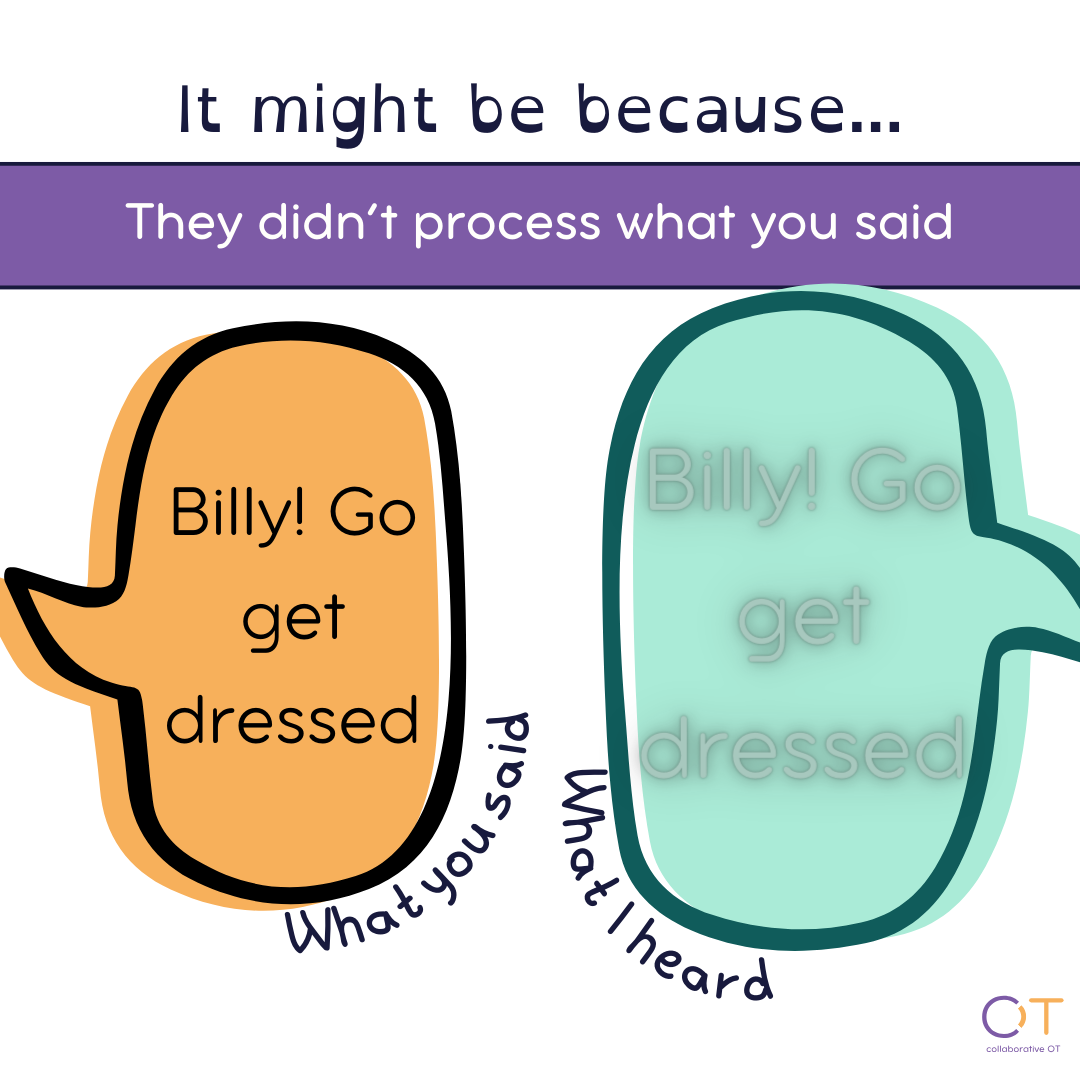
Or maybe, they’re heard and listened to you, but don’t understand what you mean.
Take an instruction like ‘go get dressed’. Simple, right?
Well, for some people not really. For some people, it’s vague.
Now your kid could be overwhelmed or confused and so just doesn’t get dressed because they don’t know what you mean.
They also might not be following through because they are actually forgetting.
Brains only have capacity to hold on to so much information at once (we call this working memory). Little brains and neurodivergent brains, can (generally speaking) hold onto less information than adults and neurotypical people (Gathercole et al., 2004; Ramos et al., 2020)
So if we’re asking our kids to go get dressed, or go do anything, they might be remembering the first step in that process, then forgetting the rest. They can’t hold the steps in their working memory so they genuinely do forget.
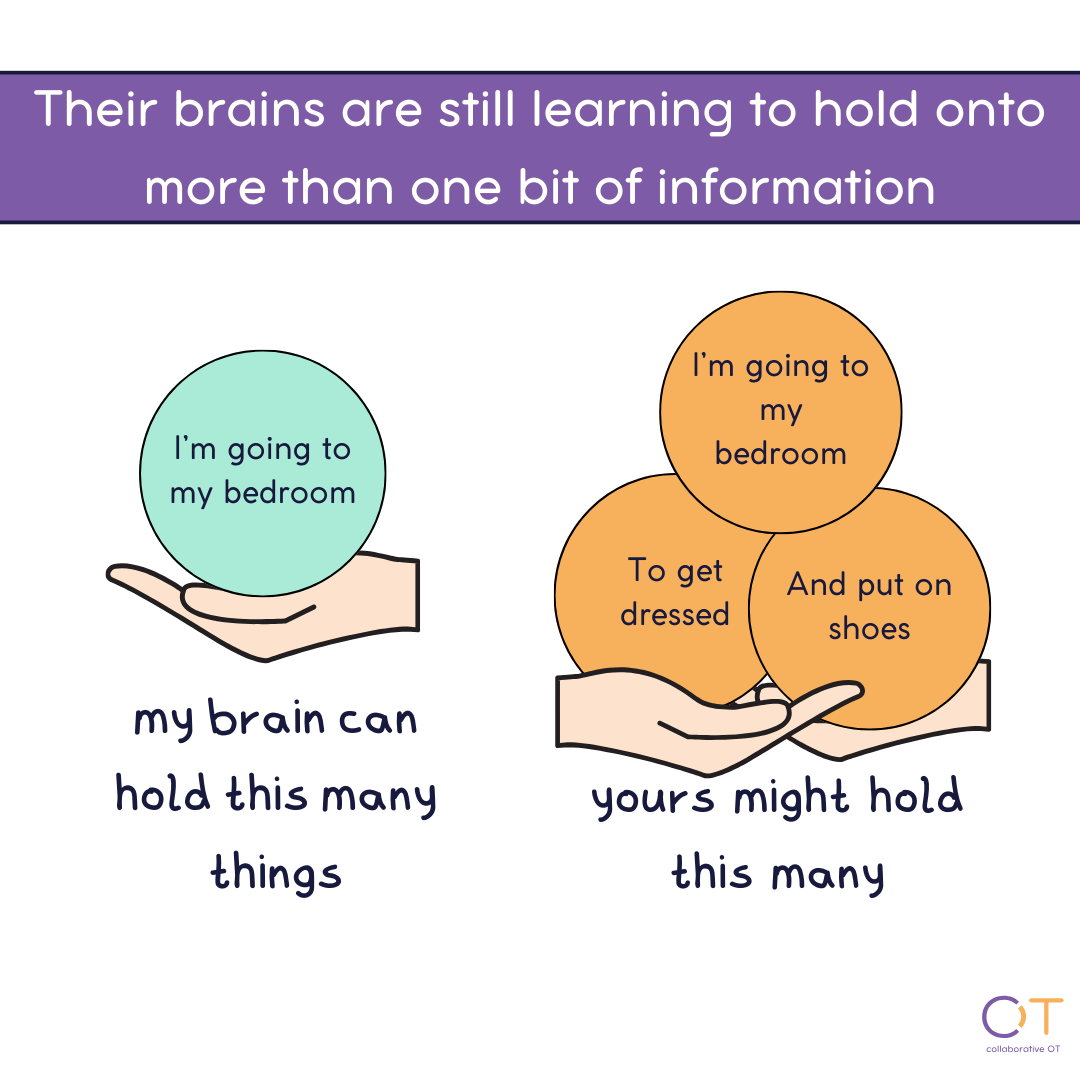
So, then how can we help them?
Well, there are lots of ways we can help our kids when it comes to getting helping them remember what we asked them to do.
We can…
Ask them to confirm what we asked them
To check that kids heard and processed what we said we can ask them to confirm with us what their next task is.
This also makes the instruction easier to remember for your child.
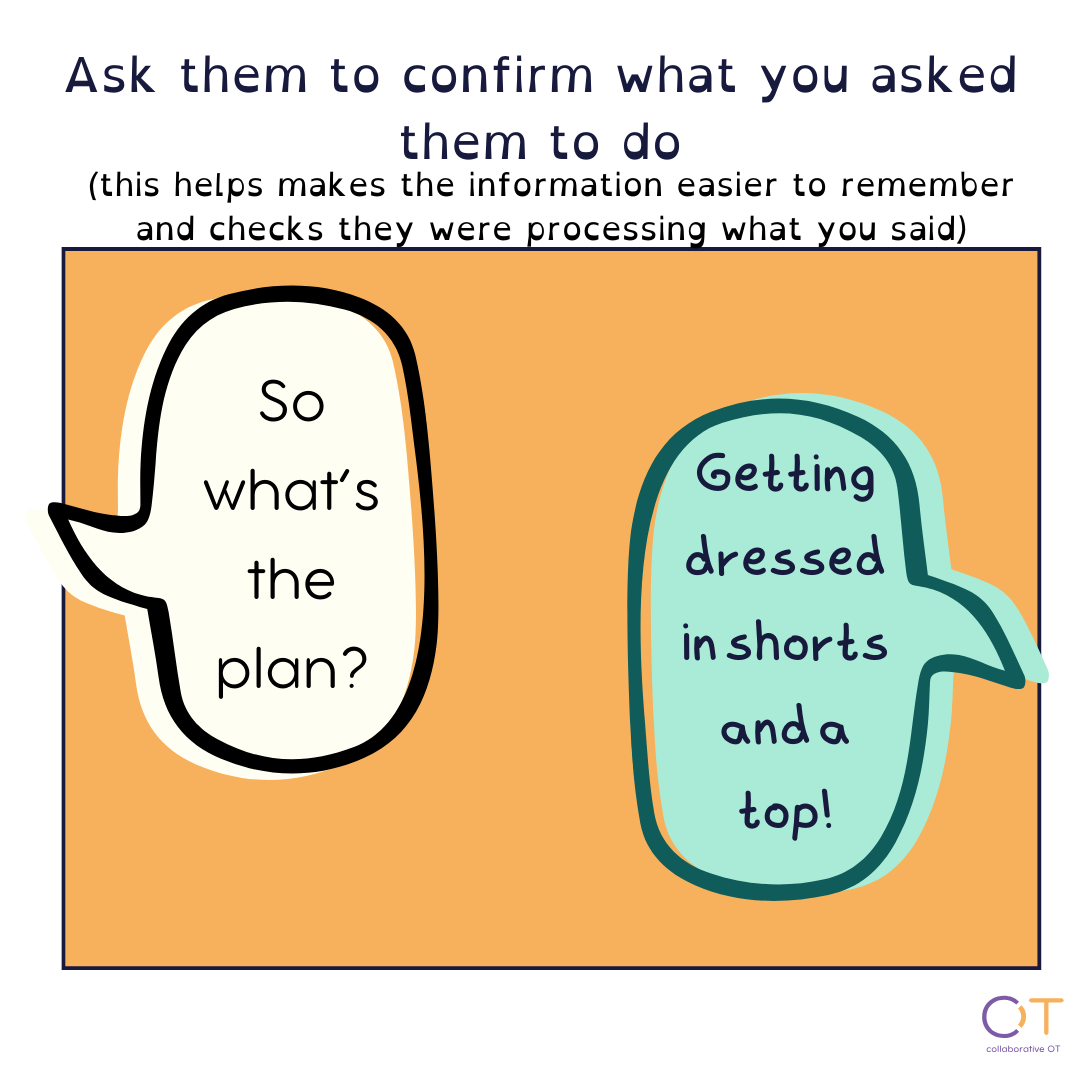
Make our instructions more specific
So rather than asking them to ‘get dressed’ (vague) we can ask them to go put on shorts and a t-shirt (specific)
Rather than asking them to ‘put their clothes away’ (vague), we can ask them to ‘move your clothes on the floor into the washing basket (specific)
Rather than asking them to ‘clear the table’ (vague), we can ask them to ‘put the plates in the dishwasher and wipe the table’ (specific)
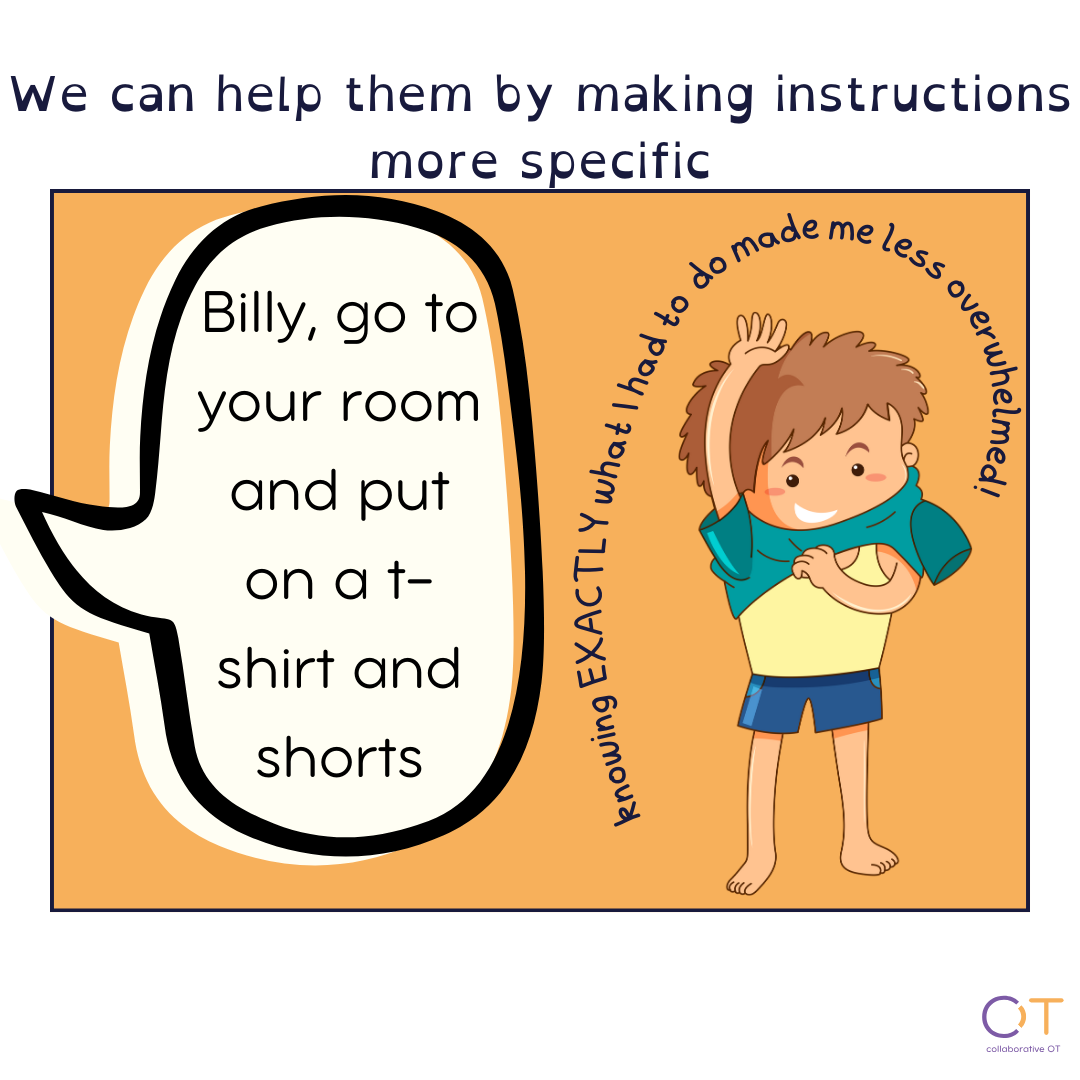
Give instructions one step at a time
If kids have difficulty holding onto information in their brain, or are getting overwhelmed with the task, we can help them by breaking it down into small steps.
So rather than saying ‘go get your shoes and socks and put them on’ (two or three steps depending on how you look at it), we can say ‘go get your shoes' then ‘put them on your feet’
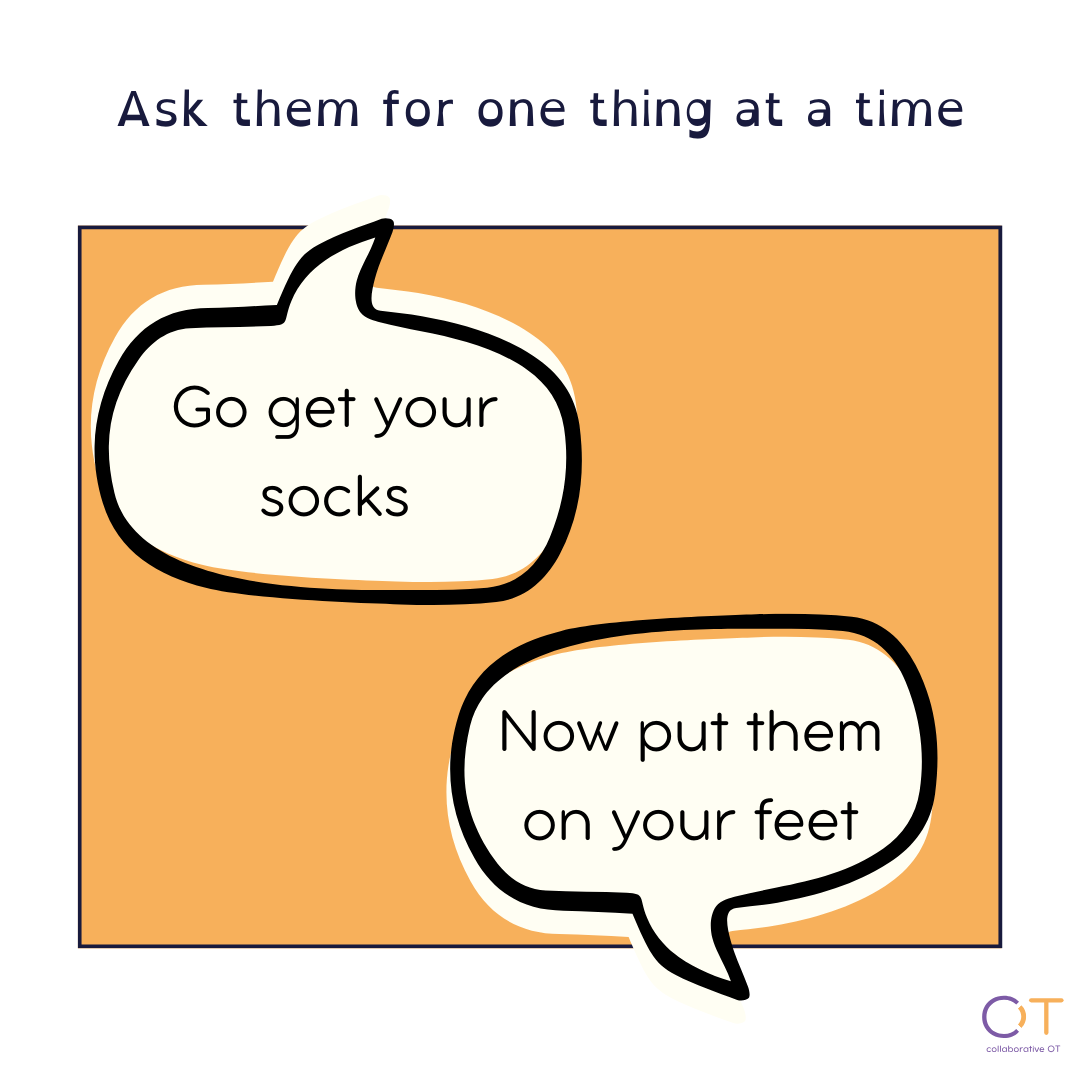
One thing to note here is that people can get frustrated when we ask them to do a thing, they finish, and we give them another task (in their mind, they might have been finished with their jobs!). To mitigate this we can ‘prime’ the with the task before giving them step by step instructions. This could look like:
“We’re going to get dressed. This means underwear, pants, top, shoes and socks. I will let you know when we are finished getting ready”.
So putting all these together, what does it look like?
First, we let them know what the plan is
“We’re going to get dressed. This means pants, top, shoes and socks. I will let you know when we are finished getting ready”.
Then, we ask them to do the first step
“Can you go and put on your pants and top?”
Then we confirm they heard and understood what we asked
“So what’s the mission Billy?”
“Pants and top!”
“Off you go super agent!”
Then when all of our getting dressed tasks are done, we let them know
“Right! We did it! All dressed! Let's get in the car! What music should we listen to?"
Is this all going to be foolproof? No.
Kids are kids, and humans are humans. Fallible, imperfect, with skills that vary day to day.
But by changing our language, and working with kids where they’re at, we’re setting our kids and ourselves up for success.
So to summarise:
People might have trouble doing things because:
- They didn’t hear what we said
- Our instructions are too vague
- They can’t hold onto all the information and are forgetting what they need to be doing
We can help them by:
- Checking in if they heard and understood up
- Making our instructions more specific
- Giving instructions one step at a time
References
Gathercole, S. E., Pickering, S. J., Ambridge, B., & Wearing, H. (2004). The Structure of Working Memory From 4 to 15 Years of Age. Developmental Psychology, 40(2), 177–190. https://doi.org/10.1037/0012-1649.40.2.177
Ramos, A., Hamdan, A., & Machado, L. (2020) A meta-analysis on verbal working memory in children and adolescents with ADHD, The Clinical Neuropsychologist, 34:5, 873-898, DOI: 10.1080/13854046.2019.1604998